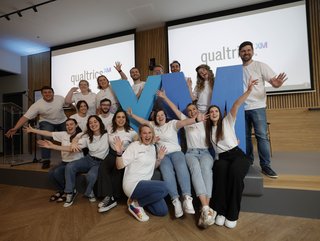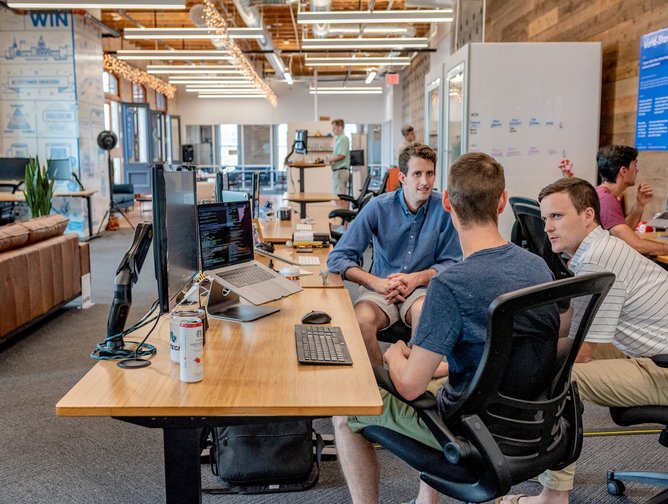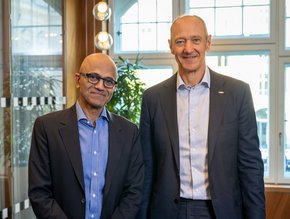Five trends set to define employee experience in 2024

Wellbeing; sustainability; workplace culture – just some of the areas where employee expectations are continuing to grow.
In an attempt to gauge what the workforce is going to be prioritising throughout 2024, Qualtrics surveyed 37,000 employees across 32 countries about the state of work.
Collating the results in its Employee Experience Trends Report for 2024, the tech powerhouse found workers want to have a voice when it comes to building a workplace experience that addresses their individual needs.
They’re also welcoming of new technology, such as AI and passive listening to their message and emails, it helps them achieve their goals.
Researchers identified five emerging trends that will define the employee experience in 2024:
- The new-job honeymoon phase is over
- Some time in the office is better than none – unless it’s five days a week
- Employees are comfortable sharing work emails and chats for an improved employee experience, but more ambivalent about social media posts being used
- Frontline employees are unhappy, poorly supported and the least trusting
- Employees would rather AI assist them than evaluate them
New-job honeymoon a thing of the past
Historically, employees have been more engaged during their first year in a role but, in its new report, Qualtrics finds the opposite to be true.
Those who have been in their jobs for less than six months demonstrated lower levels of engagement, wellbeing and inclusion compared to more tenured employees.
What’s more, just 38% of new hires intend to stay in their roles for three or more years (up 6% on last year) compared to 65% of all other workers.
It seems the novelty of a new job is no longer enough to ensure newer employees stay engaged for the first six months, at a time when the cost of hiring approaches US$5,000, according to a recent report from the Society for Human Resource Management.
“It’s not enough to get great talent in the door,” says Dr. Benjamin Granger, Chief Workplace Psychologist at Qualtrics. “The first several months are when employees form first impressions of working at a company, and first impressions are difficult to change.
“Hiring and onboarding are inextricably linked experiences that need a common thread tying them together. Otherwise, organisations run the risk of early and costly turnover.”
Five days in the office too much for employees
As debate rages on over how days employees should spend in the office, Qualtrics’ research shows that key indicators of a positive employee experience are highest for employees with hybrid schedules.
Employees in hybrid working arrangements have the highest levels of engagement (77%), intent to stay (68%) and feelings of wellbeing (79%) and inclusion (80%) compared to those who are fully remote or work full-time in the office.
Previous research showed half of employees working remotely during the pandemic felt their physical and mental wellbeing improved.

“Hybrid models give companies a good way to balance individual and organisational needs, giving employees flexibility while making time for essential, in-person collaboration,” adds Granger.
“Still, a one-size-fits-all approach may not be the best strategy, and leaders would be wise to build in flexibility within their work location policies and bring people together with purpose.”
Employees happy for AI to assist
As organisations work to incorporate AI into their everyday operations, it’s clear there is plenty of work for leaders to do when it comes to building trust among employees.
Workers are more comfortable with AI in the workplace when they have a sense of control over it, such as for writing tasks (61% of employees would use AI for this) or as a personal assistant (51%). This declines to 37% for performance evaluations and 29% for hiring decisions.
Qualtrics also found senior leaders are more willing to use AI than lower-level employees. Almost two-thirds (65%) of C-suite leaders are open to it – twice the number of individual contributors (32%).
Granger continues: “When employees are engaged and trust their leaders, they are more open to AI at work – especially when they feel a sense of control over how these technologies are used and are convinced that they will benefit them personally.
“This highlights a tangible benefit of employee engagement and the importance of communicating the individual benefits of AI, as leaders look for ways to use intelligent technologies to increase efficiency and business results.”
Read the full report: Qualtrics 2024 Employee Experience Trends
******
For more business insights, check out the latest edition of Business Chief UK & Europe and be sure to follow us on LinkedIn and Twitter.
You may also be interested in the Business Chief US & Canada website.
******
BizClik is a global provider of B2B digital media platforms that cover executive communities for CEOs, CFOs and CMOs, as well as leaders in Sustainability, Procurement & Supply Chain, Technology & AI, Cyber, FinTech & InsurTech. We also cover industries including Manufacturing, Mining, Energy, EV, Construction, Healthcare and Food & Drink.
BizClik, based in London, Dubai and New York, offers services such as content creation, advertising and sponsorship solutions, webinars and events.
- Five Minutes With: Björn Dufwenberg, MD at Strat7 AdvisoryLeadership & Strategy
- European bosses confident GenAI will benefit employeesTechnology
- Employees are at the heart of Netcompany’s GenAI solutionTechnology
- Leaders are urgently advocating for AI cyber regulationsLeadership & Strategy






